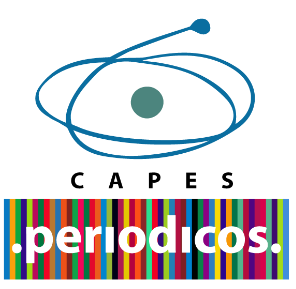A A simple and rapid spectrophotometric method for the determination of trans-chalcone in raw-material and topical formulation
DOI:
https://doi.org/10.5433/1679-0367.2023v44n2p171Palabras clave:
Chalcone, UV spectrophotometry, Quality control, Validation, Topical FormulationResumen
Trans-chalcone (TC) is a flavonoid precursor characterized by a wide spectrum of action, with anti-inflammatory and antioxidant effects. However, no validated methods are available in official compendia for the analysis of this substance. Thus, the aim of this work was to develop and validate a simple, fast, and reproducible spectrophotometric method for the analysis of TC in raw material, and in topical pharmaceutical formulation containing TC. The established conditions were: methanol as extracting solvent, and detection wavelength of 309 nm by UV spectrophotometer. All tests followed the rules of Resolution RDC 166, 2017. The proposed method was selective. Linearity was demonstrated in the concentration range of 1 to 8 μg/mL (r = 0.999). Repeatability and intermediate precision were confirmed by low relative standard deviation values of 1.53% and 2.70% for TC, and of 1.73% and 2.91% for formulation containing TC. Accuracy, evaluated through recovery test, was adequate, with minimum of 98.24% and maximum of 100.23% of recovery. It was observed that the small deliberate modifications done did not interfere with the results, demonstrating the method is robust. The results showed that the method was considered suitable for the intended purpose, inexpensive, easy to apply, selective, linear, precise, accurate, and robust for the determination TC, and pharmaceutical formulation containing TC. Thus, the method developed satisfies the need for an analytical method for the determination of TC, and topical formulation containing TC, being effective, innovative and able to aid in the development of the pharmaceutical field.
Descargas
Citas
Agência Nacional de Vigilância Sanitária (BR). Resolução da Diretoria Colegiada - RDC Nº 166, de 24 de Julho de 2017. Dispõe sobre a validação de métodos analíticos e dá outras providências. Diário Oficial da República Federativa do Brasil. 2017; Seção 1.
Anacleto SS, Teixeira LS, Borges MMC, Moraes CT, Borges WS, Pereira AC, et al. A simple and rapid hplc method for the multidetermination of enrofloxacin, ciprofloxacin, and oxytetracyclin in raw materials and veterinary pharmaceutical formulations. Curr Pharm Anal [Internet]. 2018 [cited 2023 Oct 20];14(4):397-404. Available from: https://www.researchgate.net/publication/324928516_A_Simple_and_Rapid_HPLC_Method_for_the_Multidetermination_of_Enrofloxacin_Ciprofloxacin_and_Oxytetracyclin_in_Raw_Materials_and_Veterinary_Pharmaceutical_Formulations DOI: https://doi.org/10.2174/1573412913666170613091914
Bitencourt AS, Oliveira SS, Mendez ASL, Garcia CV. UV Spectrophotometric method for determination of posaconazole: Comparison to HPLC. Rev Ciênc Farm Básica Apl [Internet]. 2015 [cited 2023 Oct 20];36(4):491-5. Available from: https://rcfba.fcfar.unesp.br/index.php/ojs/article/view/14/13
Campanini MZ, Custódio DL, Ivan AL, Martins SM, Paranzini MJ, Martinez RM, et al. Topical formulations containing Pimenta pseudocaryophyllus extract: In vitro antioxidant activity and in vivo efficacy against UV-B-induced oxidative stress. AAPS PharmSciTech. 2014;15(1):86-95. doi: 10.1208/s12249-013-0049-8. DOI: https://doi.org/10.1208/s12249-013-0049-8
Casagrande R, Baracat MM, Georgetti SR, Verri WA, Vicentini FTMC, Rafael JA, et al. Method validation and stability study of quercetin in topical emulsions. Quím Nova [Internet]. 2009 [cited 2023 Oct 20];32(7):1939-42. Available from: https://www.scielo.br/j/qn/a/F9gdX75WPfF7dCnKTzLpVCN/?format=pdf&lang=en DOI: https://doi.org/10.1590/S0100-40422009000700041
Casagrande R, Georgetti SR, Verri WA Jr, Dorta DJ, Santos AC, Fonseca MJ. Protective effect of topical formulations containing quercetin against UVB-induced oxidative stress in hairless mice. J Photochem Photobiol B. 2006;84(1):21-7. doi: 10.1016/j.jphotobiol.2006.01.006. DOI: https://doi.org/10.1016/j.jphotobiol.2006.01.006
Hong L, Han D, Li MX, Zhang P, Liu CG. Development and validation of an ultraviolet-visible spectrophotometric method for determination of phenylethyl resorcinol in new topical nanoemulsions. Int J Cosmet Sci. 2017;39(3):337-43. doi: 10.1111/ics.12381. DOI: https://doi.org/10.1111/ics.12381
Komoto TT, Lee J, Lertpatipanpong P, Ryu J, Marins M, Fachin AL, et al. Trans- chalcone suppresses tumor growth mediated at least in part by the induction of heme oxygenase-1 in breast cancer. Toxicological research. 2021;37(4):485–93. doi: 10.1007/s43188-021-00089-y. DOI: https://doi.org/10.1007/s43188-021-00089-y
Lamoke F, Labazi M, Montemari A, Parisi G, Varano M, Bartoli M. Trans-Chalcone prevents VEGF expression and retinal neovascularization in the ischemic retina. Exp Eye Res. 2011;93(4):350-4. doi: 10.1016/j.exer.2011.02.007. DOI: https://doi.org/10.1016/j.exer.2011.02.007
Lima IA, Reis RR, Melo EB. Desenvolvimento e validação de método seguro e ambientalmente adequado para quantificação de atenolol em matéria prima e comprimidos. Biosci J [Internet]. 2012 jun 29 [citado 2023 out 20];28(3):484-93. Disponível em: https://seer.ufu.br/index.php/biosciencejournal/article/view/13653
Martinez RM, Pinho-Ribeiro FA, Steffen VS, Caviglione CV, Fattori V, Bussmann AJC, et al. trans-Chalcone, a flavonoid precursor, inhibits UV-induced skin inflammation and oxidative stress in mice by targeting NADPH oxidase and cytokine production. Photochem Photobiol Sci. 2017;16(7):1162–73. doi: 10.1039/c6pp00442c. DOI: https://doi.org/10.1039/c6pp00442c
Martinez RM, Pinho-Ribeiro FA, Steffen VS, Caviglione CV, Pala D, Baracat MM, t al. Topical formulation containing hesperidin methyl chalcone inhibits skin oxidative stress and inflammation induced by ultraviolet B irradiation. Photochem Photobiol Sci. 2016;15(4):554-63. doi: 10.1039/c5pp00467e. DOI: https://doi.org/10.1039/c5pp00467e
Martinez RM, Pinho-Ribeiro FA, Steffen VS, Silva TCC, Caviglione CV, Bottura C, et al. Topical formulation containing naringenin: efficacy against ultraviolet b irradiation-induced skin inflammation and oxidative stress in mice. PloS one. 2016;11(1):e0146296. doi: 10.1371/journal.pone.0146296. DOI: https://doi.org/10.1371/journal.pone.0146296
Martinez RM, Pinho-Ribeiro FA, Vale DL, Steffen VS, Vicentini FTMC, Vignoli JA, et al. Trans-chalcone added in topical formulation inhibits skin inflammation and oxidative stress in a model of ultraviolet B radiation skin damage in hairless mice. J Photochem Photobiol B. 2017;171:139-46. doi: 10.1016/j.jphotobiol.2017.05.002. DOI: https://doi.org/10.1016/j.jphotobiol.2017.05.002
Nascimento GNL, Rosa DL, Nishijo H, Aversi-Ferreira TA. Validation of a spectrophotometry method to determine ciprofibrate content in tablets. BJPS. 2011;47(1): 23-9.
Rapalli VK, Kaul V, Gorantla S, Waghule T, Dubey SK, Pandey MM, et al. UV Spectrophotometric method for characterization of curcumin loaded nanostructured lipid nanocarriers in simulated conditions: Method development, in-vitro and ex-vivo applications in topical delivery. Spectrochim Acta A Mol Biomol Spectrosc. 2020;224:117392. doi: 10.1016/j.saa.2019.117392. DOI: https://doi.org/10.1016/j.saa.2019.117392
Sahu NK, Balbhadra SS, Choudhary J, Kohli DV. Exploring pharmacological significance of chalcone scaffold: a review. Curr Med Chem. 2012;19(2):209-25. doi: 10.2174/092986712803414132. DOI: https://doi.org/10.2174/092986712803414132
Sikander M, Malik S, Yadav D, Biswas S, Katare DP, Jain SK. Cytoprotective activity of a trans-chalcone against hydrogen peroxide induced toxicity in hepatocellular carcinoma (HepG2) cells. Asian Pac J Cancer Prev. 2011;12(10):2513–6.
Silva G, Marins M, Fachin AL, Lee SH, Baek SJ. Anti-cancer activity of trans-chalcone in osteosarcoma: Involvement of Sp1 and p53. Mol Carcinog. 2016t;55(10):1438-48. doi: 10.1002/mc.22386. DOI: https://doi.org/10.1002/mc.22386
Silva-Buzanello RA, Ferro AC, Bona E, Cardozo-Filho L, Araújo PHH, Leimann FV, et al. Validation of an Ultraviolet-visible (UV-Vis) technique for the quantitative determination of curcumin in poly(L-lactic acid) nanoparticles. Food Chem. 2015;172:99-104. doi: 10.1016/j.foodchem.2014.09.016. DOI: https://doi.org/10.1016/j.foodchem.2014.09.016
United States Pharmacopeial Convention. Pharmacists’ Pharmacopeia: USP 49. Rockville: United States Pharmacopeial; 2023.
Descargas
Publicado
Cómo citar
Número
Sección
Licencia
Derechos de autor 2023 Renata Martinez, Nathalia Yurika Fukuda, Jenifer Freitas da Silva, Clara Ruiz de Souza, Sandra Regina Georgetti, Marcela Maria Baracat, Rúbia Casagrande

Esta obra está bajo una licencia internacional Creative Commons Atribución-NoComercial 4.0.
Semina: Ciências Biológicas e da Saúde adota para suas publicações a licença CC-BY-NC, sendo os direitos autorais do autor, em casos de republicação recomendamos aos autores a indicação de primeira publicação nesta revista.
Esta licença permite copiar e redistribuir o material em qualquer meio ou formato, remixar, transformar e desenvolver o material, desde que não seja para fins comerciais. E deve-se atribuir o devido crédito ao criador.
As opiniões emitidas pelos autores dos artigos são de sua exclusiva responsabilidade.
A revista se reserva o direito de efetuar, nos originais, alterações de ordem normativa, ortográfica e gramatical, com vistas a manter o padrão culto da língua e a credibilidade do veículo. Respeitará, no entanto, o estilo de escrever dos autores. Alterações, correções ou sugestões de ordem conceitual serão encaminhadas aos autores, quando necessário.

Este obra está licenciado com uma Licença Creative Commons Atribuição-NãoComercial 4.0 Internacional.

















